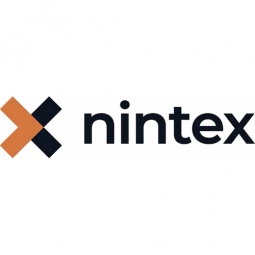Technology Category
- Analytics & Modeling - Robotic Process Automation (RPA)
- Networks & Connectivity - 5G
Applicable Industries
- Aerospace
- Retail
Use Cases
- Onsite Human Safety Management
- Time Sensitive Networking
Services
- Cloud Planning, Design & Implementation Services
About The Customer
Flight Centre Travel Group is one of the world’s largest travel agency groups. Headquartered in Brisbane, Australia, Flight Centre’s vast leisure and corporate sales network extends around the world, operating in 90+ countries. From its humble beginnings in double-decker buses to today—with 30 brands and thousands of corporate customers—Flight Centre aims to “open up the world for those who want to see.” The company uses K2 Cloud for a number of processes, including HR approvals, credit notes, contracts, and travel approvals. As the COVID-19 pandemic hit the travel industry, Flight Centre was able to quickly launch COVID-related apps and forms, including customer cancellations and a workplace safety app.
The Challenge
Flight Centre Travel Group, one of the world's largest travel agency groups, was facing challenges in improving productivity across its business groups and operations. The company needed an easy-to-use tool for workflow automation. One of the major challenges was the manual and time-consuming process of building HUB sites for its corporate customers. These sites store a traveler’s profile in a secure environment, including frequent flyer information, seat and meal preferences, credit card number, and identification documents. The process could take up to 16 weeks to build and required collecting information for each legal entity in each of its customers’ regions. This could mean Flight Centre had to manually create dozens, hundreds, or even upwards of a thousand HUB sites for just one customer. The company struggled with maintaining transparency and consistency as information was spread across spreadsheets, forms, and third-party tools, with no single source of truth. The implementation team members were spending too much time managing this complex process rather than focusing on the customer experience.
The Solution
Flight Centre adopted K2 Cloud to streamline and automate HR approvals, credit notes, contracts, travel approvals, and more. The company also developed the HUB Builds app, which allows customers to onboard faster than ever. The app was designed to collect customer information and configure it with their RPA tool, which could then use that data to automatically build those sites. This solution not only saved time but also improved transparency within the process, allowing for better communication between the customer and implementation teams. The company also used K2 Cloud to quickly launch COVID-related apps and forms, including customer cancellations and a workplace safety app. An internal customer cancellation form was created to streamline requests and process them in a timely manner. The form feeds information back into an internal ticketing system that divvies up tickets and assigns deadlines based on the submission date. Additionally, a Healthcheck app was designed to track who was on its premises at any time and report any incidents quickly.
Operational Impact
Quantitative Benefit

Case Study missing?
Start adding your own!
Register with your work email and create a new case study profile for your business.
Related Case Studies.

Case Study
Airbus Soars with Wearable Technology
Building an Airbus aircraft involves complex manufacturing processes consisting of thousands of moving parts. Speed and accuracy are critical to business and competitive advantage. Improvements in both would have high impact on Airbus’ bottom line. Airbus wanted to help operators reduce the complexity of assembling cabin seats and decrease the time required to complete this task.

Case Study
Aircraft Predictive Maintenance and Workflow Optimization
First, aircraft manufacturer have trouble monitoring the health of aircraft systems with health prognostics and deliver predictive maintenance insights. Second, aircraft manufacturer wants a solution that can provide an in-context advisory and align job assignments to match technician experience and expertise.

Case Study
Improving Production Line Efficiency with Ethernet Micro RTU Controller
Moxa was asked to provide a connectivity solution for one of the world's leading cosmetics companies. This multinational corporation, with retail presence in 130 countries, 23 global braches, and over 66,000 employees, sought to improve the efficiency of their production process by migrating from manual monitoring to an automatic productivity monitoring system. The production line was being monitored by ABB Real-TPI, a factory information system that offers data collection and analysis to improve plant efficiency. Due to software limitations, the customer needed an OPC server and a corresponding I/O solution to collect data from additional sensor devices for the Real-TPI system. The goal is to enable the factory information system to more thoroughly collect data from every corner of the production line. This will improve its ability to measure Overall Equipment Effectiveness (OEE) and translate into increased production efficiencies. System Requirements • Instant status updates while still consuming minimal bandwidth to relieve strain on limited factory networks • Interoperable with ABB Real-TPI • Small form factor appropriate for deployment where space is scarce • Remote software management and configuration to simplify operations

Case Study
Aerospace & Defense Case Study Airbus
For the development of its new wide-body aircraft, Airbus needed to ensure quality and consistency across all internal and external stakeholders. Airbus had many challenges including a very aggressive development schedule and the need to ramp up production quickly to satisfy their delivery commitments. The lack of communication extended design time and introduced errors that drove up costs.

Case Study
Digital Retail Security Solutions
Sennco wanted to help its retail customers increase sales and profits by developing an innovative alarm system as opposed to conventional connected alarms that are permanently tethered to display products. These traditional security systems were cumbersome and intrusive to the customer shopping experience. Additionally, they provided no useful data or analytics.








